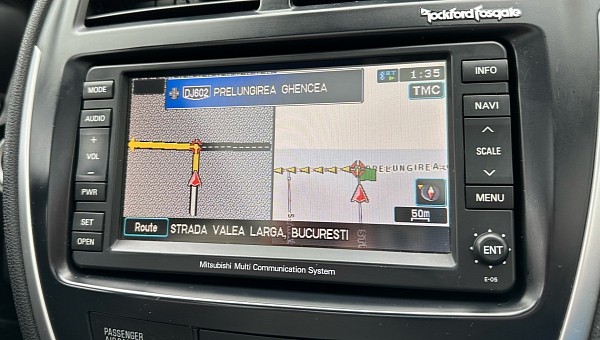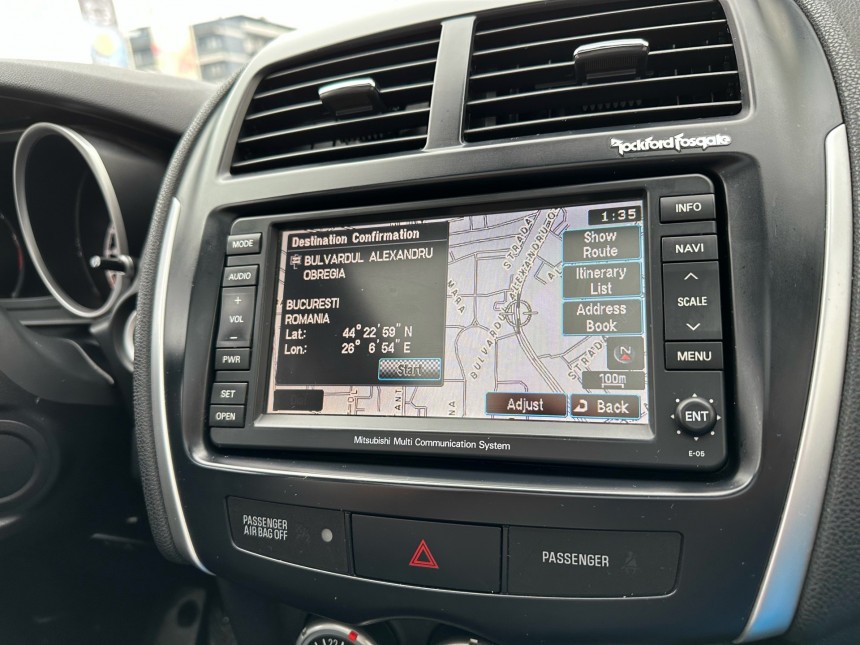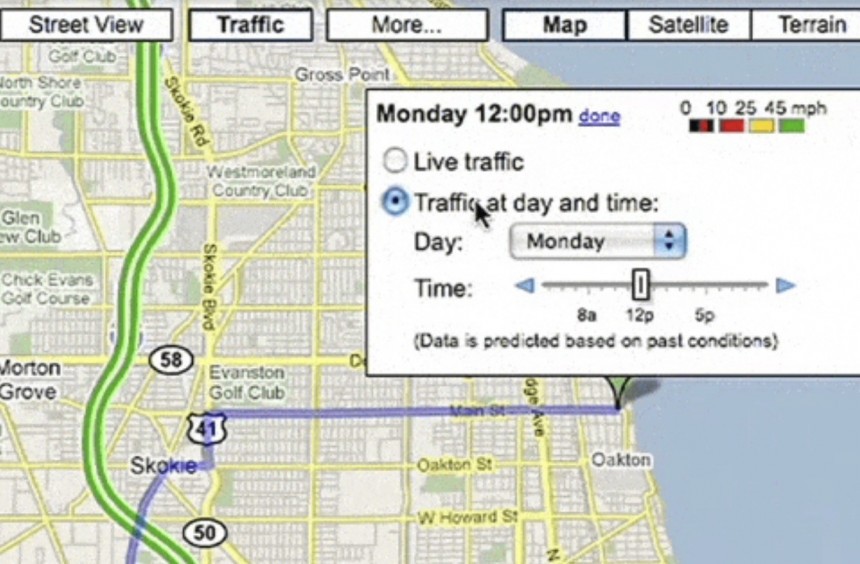Navigation software has been around pre-loaded in new cars for more than a decade, and needless to say, it has evolved significantly in the last few years thanks to a series of new capabilities.
On the other hand, it’s also not a secret that fewer customers end up paying extra for pre-installed navigation in their new cars. The reason is as simple as it could be: given everybody has a phone in their pocket, getting Android Auto or CarPlay makes much more sense in the long term, as this provides them not only with access to the likes of Google Maps but also with hands-free interaction with mobile devices and the installed apps (including Spotify, phone calls, messages, and so on).
At the end of the day, we’re getting more for less, and this is also one of the reasons Google Maps has become incredibly popular in the last few years.
With its navigation component sporting top-notch features, Google Maps is now a must-have application for many modern drivers out there, not only for short drives like daily commutes but also for longer journeys.
Just like the pre-installed sat-nav installed by carmakers in their vehicles, Google Maps has evolved significantly in the last few years. And while it does come with a feature package that’s hard to compete with, leaving behind the navigation software pre-loaded in new cars is more of a matter of costs rather than a choice based on features.
I recently got the chance to try out the navigation software in a 2010 Mitsubishi Outlander Sport (also known as Mitsubishi ASX in Europe), and after using it for a few hours, I came to a rather simple conclusion: while many believe Google Maps was ahead of its time, this wasn’t necessarily the case.
First and foremost, the essential navigation features were already available in cars in 2010. The sat-nav Mitsubishi used provided step-by-step directions, voice guidance, and multi-stop support, as well as automatic zooming in/zooming out based on the speed of the vehicle. While such features sound ridiculous for a navigation app in 2023, you should probably know that Apple Maps was updated with multi-stop support only a few months ago, whereas Mitsubishi has been offering this capability for nearly 13 years.
It's not difficult to see where the original Mitsubishi sat-nav is losing the battle. Google Maps was capable of receiving map updates at a faster pace and without the need for anything else than an Internet connection. On the other hand, car owners had to pay a visit to the dealership for every map update, and it goes without saying this wasn’t exactly the most convenient approach in the first place.
Another thing that made a huge difference but which drivers weren’t necessarily interested in 13 years ago was the traffic information. At that point, such technology was still in its early days, and needless to say, the data it provided wasn’t exactly the most accurate.
But the navigation software pre-loaded in cars back in 2010 was already impressively advanced. For instance, some systems even supported voice command input, so users were allowed to search for new destinations using nothing but their voice. This was a great way to reduce distraction behind the wheel, and today, it’s an essential capability of the modern navigation experience.
So at the end of the day, while Google Maps eventually reinvented the navigation software world, there was a time when its capabilities were almost on par with what carmakers were offering. Most car manufacturers relied on third-party mapping services provided by companies like HERE and TomTom, and today, these solutions are among the most advanced in the market.
As a little bit of trivia, Google Maps was updated with navigation capabilities in late 2009 when Google released the new capabilities as a beta build for Android 2.0 devices.
The new release was packed with new-generation features, including the first implementation of a basic traffic layer that was able to pull information on traffic jams over the Internet. At that point, however, Google Maps wasn’t able to reroute automatically, so users had to search for a new route manually.
The same update also brought the first version of the satellite view, a feature that, in the meantime, became an essential navigation option for Google Maps users across the world. And last but not least, Google Maps was also updated with support for searching by voice (something that also existed in cars available in 2010), as well as options to search for points of interest along the route.
A lot of things have changed in the last decade, and while navigation software is still available for new car buyers, most drivers are just sticking with the mobile navigation solutions installed on their phones. The dedicated GPS navigators are almost completely gone (except for RVs and motorhomes, where they are still a must-have), while Google Maps and the new capabilities that it receives regularly helped it conquer the lion’s share in this particular space.
At the end of the day, we’re getting more for less, and this is also one of the reasons Google Maps has become incredibly popular in the last few years.
With its navigation component sporting top-notch features, Google Maps is now a must-have application for many modern drivers out there, not only for short drives like daily commutes but also for longer journeys.
Just like the pre-installed sat-nav installed by carmakers in their vehicles, Google Maps has evolved significantly in the last few years. And while it does come with a feature package that’s hard to compete with, leaving behind the navigation software pre-loaded in new cars is more of a matter of costs rather than a choice based on features.
I recently got the chance to try out the navigation software in a 2010 Mitsubishi Outlander Sport (also known as Mitsubishi ASX in Europe), and after using it for a few hours, I came to a rather simple conclusion: while many believe Google Maps was ahead of its time, this wasn’t necessarily the case.
It's not difficult to see where the original Mitsubishi sat-nav is losing the battle. Google Maps was capable of receiving map updates at a faster pace and without the need for anything else than an Internet connection. On the other hand, car owners had to pay a visit to the dealership for every map update, and it goes without saying this wasn’t exactly the most convenient approach in the first place.
Another thing that made a huge difference but which drivers weren’t necessarily interested in 13 years ago was the traffic information. At that point, such technology was still in its early days, and needless to say, the data it provided wasn’t exactly the most accurate.
But the navigation software pre-loaded in cars back in 2010 was already impressively advanced. For instance, some systems even supported voice command input, so users were allowed to search for new destinations using nothing but their voice. This was a great way to reduce distraction behind the wheel, and today, it’s an essential capability of the modern navigation experience.
So at the end of the day, while Google Maps eventually reinvented the navigation software world, there was a time when its capabilities were almost on par with what carmakers were offering. Most car manufacturers relied on third-party mapping services provided by companies like HERE and TomTom, and today, these solutions are among the most advanced in the market.
The new release was packed with new-generation features, including the first implementation of a basic traffic layer that was able to pull information on traffic jams over the Internet. At that point, however, Google Maps wasn’t able to reroute automatically, so users had to search for a new route manually.
The same update also brought the first version of the satellite view, a feature that, in the meantime, became an essential navigation option for Google Maps users across the world. And last but not least, Google Maps was also updated with support for searching by voice (something that also existed in cars available in 2010), as well as options to search for points of interest along the route.
A lot of things have changed in the last decade, and while navigation software is still available for new car buyers, most drivers are just sticking with the mobile navigation solutions installed on their phones. The dedicated GPS navigators are almost completely gone (except for RVs and motorhomes, where they are still a must-have), while Google Maps and the new capabilities that it receives regularly helped it conquer the lion’s share in this particular space.











